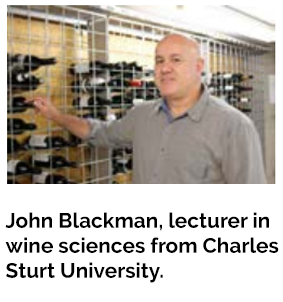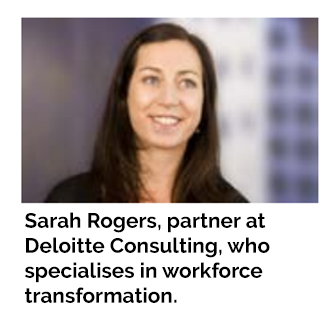By Adam Keath
Consultant, Wine Network Consulting, email: akeath@winenet.com.au
In the midst of an increasingly tight labour market across most industries in Australia, Adam’s article offers some suggestions for wineries on how to attract the best potential recruits in an environment of changing employee expectations.

Finding the right person for the job has always been tricky but finding good staff in general is currently one of the biggest issues in the wine industry. The demand for recruitment services is at an all-time high. At Wine Network we’re consistently working with clients to find the perfect fit for the role, but also helping to guide wine businesses through the changing landscape of employee expectations.
WHERE ARE THEY?
I spoke about this problem with Sarah Rogers, partner at Deloitte Consulting, who specialises in workforce transformation. Sarah noted that the problem is affecting all industries. “This is an issue across all sectors, particularly primary industries that rely heavily on skilled migrants as well as unskilled labour, such as backpackers and short-term visa holders,” she said. Though we’ll be focusing on skilled labour and career progression in this article, recruitment of workers for vintage, harvesting and pruning is also becoming increasingly difficult.
CHANGING EXPECTATIONS
With a range of positions being advertised, there is clearly staff movement in the industry. This is contributing to a change in the type of applicant we are seeing and their expectations, with Sarah suggesting that there has been “a shift in employees desire for a greater sense of purpose in their work, the realignment of work/life priorities post-pandemic and a desire for greater flexibility”.
“Whilst some employers are offering this, others are being slower to adapt. When you then factor in strong jobs growth in the general job market and reduced skilled migration, you get a tightening of the labour market. This changes the power balance between employers and employees,” Sarah says.
We are also seeing a change in dynamics with the career progression of the next generation. According to Sarah, millennials now make up more than 50% of the workforce. Research shows that millennials are more likely to change jobs more frequently, want to give and receive more feedback and are purpose rather than profit driven. So how can businesses adapt to these changes and appeal to this section of the workforce? Sarah suggests, “Organisations need to move away from demographic workforce segmentation and more toward personalisation; recognise that skills and careers are rapidly changing and traditional age-related boundaries around leadership roles are breaking down”. It’s not all about the millennials though. “That being said, many preferences once associated with millennials — such as the desire to work for an employer who reflects their values and the preference for flexible schedules — now hold true for all generations”, Sarah continues, highlighting there is a growing demand for change across the entire workforce.
“…many preferences once associated with — such as the desire to work for an employer who reflects their values and the preference for flexible schedules — now hold true for all generations.”
– Sarah Rogers, Deloitte Consulting
LOCATION, LOCATION, LOCATION
With the vast majority of wineries located in remote or regional areas, these locations can face more difficulty in attracting staff. These areas are also competing with locations like the Yarra Valley that have access to a greater number of services and have close proximity to a major city. This issue is not restricted to the wine industry, as Sarah explains. “It’s a challenge for many organisations in remote/ regional areas. Mining companies have been grappling with this for years, and have largely addressed it through generous reward schemes and FIFO arrangements. Depending on the roles and the workforce segments you need, different strategies can be considered, for example, graduate/intern programs for defined periods as part of a rotation across other sites or with partner organisations,” she suggests. Asked to elaborate on talent sharing across geographies Sarah explains, “there are examples of programs run by groups of related organisations in sectors like hospitality where businesses sponsor workers who work at resorts in the snow during winter, then move on to hotels in Far North Queensland in summer”.
A direct approach can prove beneficial, as Sarah points out. “Targeted sourcing of people who have grown up in the country has also been proven to be effective,” she says. “Research shows that country kids are more likely to return to the country when they are ready to settle down. In terms of critical senior roles, its generally about rewards and longer-term career paths and development opportunities. Targeting people at particular points in their career and understanding that it might be a two to three year rotation in that role before moving onto something more attractive.”
STUDY & IN-HOUSE TRAINING

John Blackman, from Charles Sturt University, has noticed a shift in the number of students enrolled in its winemaking undergraduate program.
We spoke about the decline in numbers between 2004 to 2013, where enrolments dropped from close to 150 (50 full time on campus and 100 part-time via distance education) to as low as 50. Numbers are now steadily increasing and have been consistently sitting at around 80 a year. The biggest change has been the transition of all students to conducting their studies through the distance education model. John observed that about 80% of these students are already in the workforce and are being supported in some way by their employers in completing their winemaking or viticulture qualifications. This suggests that many of the larger organisations are already working towards providing a training based approach that is supported by career progression.
Discussing why businesses are finding it harder to find qualified people, John also highlighted that in addition to less graduates the problem is further compounded by the type of graduates. Of the 80% of students already in the industry, most are starting their education in their late 20s, meaning they graduate in their mid-30s. This means most graduates are starting their career at a time in their life when they have stable partners and/or children to consider when making career choices. This makes for a very different appetite for spending five years in a remote location whilst gaining experience on an introductory wage. The remaining students going through the course have little intention of joining the general workforce; they are established in other careers, own a vineyard and are doing the course to improve their knowledge of wine, or to help them make their own wine better.
SUCCESSION PLANNING
In terms of succession planning, Sarah explains that Deloitte views this as the key to business continuity and risk management. This should be seen as one part of a mature workforce management system alongside other activities such as strategic workforce planning, sourcing, onboarding and development, performance management and employee engagement. In Sarah’s opinion, you don’t need to have a succession plan for every role in the business. However, you do need to understand and prioritise critical workforce segments, the roles that contribute disproportionately to the execution of strategy through the capabilities they bring to the business. Part of this is also being aware of those skills that are relatively scarce in the labour market, or hard to attract. The anecdotal evidence suggests that businesses need to seriously consider this strategy in relation to winemaking roles. The other area of succession planning we briefly discussed is that of family succession planning — there is enough for another article on this topic alone! Managing a family business, as many wineries are, through generational change can be very challenging. Using a financial advisory service like Deloitte can help with this process.
GREEN, GREEN GRASS
Succession planning is great in theory, particularly for larger organisations that have multiple layers of winemakers and viticulturists, but is not always possible. Smaller organisations often consist of only a few technical roles, including a senior winemaker and, if they’re lucky, maybe an assistant. There will always be a need for staff movement and, as such, how do businesses without a succession plan recruit successfully? They essentially need to attract talent that has been developed by other businesses.
It is also worth reflecting on the fact that the wine industry often attracts investors that have made their money in other industries or professions. Their move into wine is not always based on a sound financial plan but on pure reputational ambition. This allure, romance and fascination with wine at times blinds people to the reality of the industry. This is also true of winemaking as a job, with many winemakers staying in a job longer than they should. The wine industry has many workplace benefits and can offer great career progression, though complacency can easily set in, particularly when working long-term for one organisation. This means that there is a greater pool of talent than what is immediately evident. The direct approach and using a recruitment service like the one provided by Wine Network is an effective strategy in finding the best person for the role.
Whilst it can be easy to be frustrated by what feels like constant demands for more from our younger employees, particularly the millennial generation, it is perhaps time we all start considering the fact that these changes could have positive benefits across the business. Often it is not until we approach and discuss a possible new role with a supposedly happily-employed winemaker that they realise their current position isn’t actually as great as they thought it was. The increase in renumeration of senior technical roles due to the supply and demand dynamics means that some longer-term employees on CPI increases can be very much undervalued. These people are not, or were not, actively looking for a new role until we approached them with a potential new opportunity. These are the type of people who are highly skilled and a great candidate for many businesses but don’t respond to the traditional approach.
It’s not as simple as finding a qualified person for the job; it’s about finding the best person for the job that suits them and the business. When we work with a recruitment client at Wine Network, we focus on creating the right fit for both the business and the employee. There is no point putting a great winemaker into a business where we know they won’t thrive. They might be perfect for one role but completely unsuitable for another. There are many factors to consider to ensure that both sides are happy.
We spend a considerable amount of time understanding the business we are recruiting for. We talk about their needs and plans and then guide them in writing a job description that will help attract the right skillset and, importantly, the right attitude. Comparing the roles of a winemaker in different businesses can be like comparing apples and oranges. Are we looking for someone who can deal with corporate structures or the ambiguity of a family businesses? Is the business expanding, stable, wanting to develop new lines or reduce complexity? These are all elements that need to be considered and will also define the approach we take. Until we understand all these factors it is hard to determine if a candidate will fit, be happy and will, in turn, contribute to the business’ success.
Whilst we do advertise through traditional channels as well, it is our ‘peer to peer’ campaigns that offer the best results.
The talent pool is much larger than what you can see on the surface and often needs the direct approach to dive through the barrier of complacency. It’s decades of collective wine shows and networking that allows us to not only find the unexpected candidate, but also to make sure that those we put forward are well respected within the wine industry and fit our own criteria.
The world of recruitment is shifting and we need to move with it. Like every industry we are seeing a cultural shift and a new generation bringing more change. Skilled workers are still there, though we just need to work a little harder to find them.
